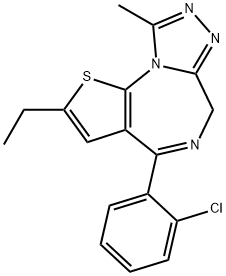N-Vinylcaprolactam
Synonym(s):1-Ethenylazepan-2-one;1-Ethenylhexahydro-2H -azepin-2-one;1-Vinylazepan-2-one
- CAS NO.:2235-00-9
- Empirical Formula: C8H13NO
- Molecular Weight: 139.19
- MDL number: MFCD00080693
- EINECS: 218-787-6
- SAFETY DATA SHEET (SDS)
- Update Date: 2025-08-05 18:30:54

What is N-Vinylcaprolactam?
Chemical properties
N-Vinylcaprolactam is a pale yellow crystalline solid. It is a versatile reactive diluent for free radical radiation curable coatings, inks, and adhesives which are used on a wide variety of substrates such as flooring, paper, plastics and more.
The Uses of N-Vinylcaprolactam
N-Vinyl-e-caprolactam (cas# 2235-00-9) is a compound useful in organic synthesis.
Benefits
N-Vinylcaprolactam serves as a diluent when coating plastics, as it softens the surface thereby aiding adhesion of the cured film. The monomer N-Vinyl caprolactam provides fast curing and low viscosity and is relatively safe in radiation curable ink. Commercial uses of this chemical have also been reported to include use as a kinetic inhibitor for natural gas hydrates when integrated as a polymer.
General Description
N-Vinylcaprolactam (NVCL) is an organo-soluble amphiphilic material that is soluble in solvents like benzene, isobutanol, and isopropanol. It can be used in the preparation of poly(NVCL) by free-radical polymerization at a temperature higher than its melting point.
Flammability and Explosibility
Non flammable
Safety Profile
The acute oral LD50 of vinylcaprolactam was determined to be 1114mg/kg in rats. The acute oral LD50 was determined to be 1236mg/kg in male rats and 1049mg/kg in female rats.
Potential Exposure
Consumer: N-vinylcaprolactam is used as a reactive diluent for UV-coatings, -inks and -adhesives as well as a building block for synthesis of paper coatings and will be almost exclusively incorporated into the polymer matrix within consumer products. Therefore, due to the extremely low levels of residual monomer present in consumer products, exposure and subsequent risk is unlikely.
Worker: In industrial settings, N-vinylcaprolactam is manufactured and handled primarily in closed processes which limit exposure. Based on good manufacturing processes and industrial hygiene the occupational health risk associated with N-vinylcaprolactam is low.
Environmental Exposures: N-vinylcaprolactam is inherently biodegradable and has low potential for bioaccumulation. It is soluble in water and has low potential for volatilization. Based on its physical and chemical properties, if n-vinyl caprolactam was released into the environment, it is expected to partition between water and soil. Volatilization from water surfaces is not expected.
Purification Methods
Distil it under vacuum and with 0.0015% of 4-tert-butylcatechol as stabilizer. [Beilstein 21 III/IV 3207.]
Properties of N-Vinylcaprolactam
| Melting point: | 35-38 °C (dec.) (lit.) |
| Boiling point: | 128 °C/21 mmHg (lit.) |
| Density | 1.029 g/mL at 25 °C (lit.) |
| vapor pressure | 3Pa at 20℃ |
| refractive index | 1. |
| Flash point: | 214 °F |
| storage temp. | 2-8°C |
| form | powder to lump to clear liquid |
| pka | -0.91±0.20(Predicted) |
| color | White or Colorless to Light orange to Yellow |
| Odor | Faint specific odor |
| Water Solubility | Soluble in water (partly). |
| Stability: | Stable. Combustible. Incompatible with strong oxidizing agents. |
| CAS DataBase Reference | 2235-00-9(CAS DataBase Reference) |
| EPA Substance Registry System | 2H-Azepin-2-one, 1-ethenylhexahydro- (2235-00-9) |
Safety information for N-Vinylcaprolactam
| Signal word | Danger |
| Pictogram(s) |
 Exclamation Mark Irritant GHS07  Health Hazard GHS08 |
| GHS Hazard Statements |
H317:Sensitisation, Skin H319:Serious eye damage/eye irritation H372:Specific target organ toxicity, repeated exposure |
| Precautionary Statement Codes |
P280:Wear protective gloves/protective clothing/eye protection/face protection. P314:Get medical advice/attention if you feel unwell. P305+P351+P338:IF IN EYES: Rinse cautiously with water for several minutes. Remove contact lenses, if present and easy to do. Continuerinsing. |
Computed Descriptors for N-Vinylcaprolactam
| InChIKey | JWYVGKFDLWWQJX-UHFFFAOYSA-N |
New Products
4,4-Difluoropiperidine hydrochloride tert-butyl 9-methoxy-3-azaspiro[5.5]undecane-3-carboxylate Indole Methyl Resin N-Isopropylurea N,N-Dicyclohexylcarbodiimide(DCC) MELDRUMS ACID 5-METHYLISOXAZOLE-4-CARBOXYLIC ACID Magnessium Bis glycinate Zinc ascorbate 1-bromo-2-butyne 2-acetamidophenol 9(10H)-anthracenone Erythrosin B, 4-Piperidinopiperidine 2-((4-morpholinophenylamino) (methylthio) methylene) malononitrile 2,4-dihydroxybenzaldehyde 3-(4-morpholinophenylamino)-5-amino-1H-pyrazole-4-carbonitrile Methyl 2-methylquinoline-6-carboxylate 2,6-dichloro-4-nitropyridine 4-Bromo-2-chlorobenzonitrile 2-(benzylamino)acetic acid hydrochloride 4-(tert-Butoxycarbonylamino)but- 2-ynoic acid 3,4-dihydro-2H-benzo[b][1,4]dioxepine 1-Phenyl-1-cycloprppanecarboxylicacidRelated products of tetrahydrofuran








You may like
-
 2235-00-9 1-Ethenylhexahydro-2H-azepin-2-one 98%View Details
2235-00-9 1-Ethenylhexahydro-2H-azepin-2-one 98%View Details
2235-00-9 -
 N-Vinyl-ε-caprolactam (stabilized with HO-TEMPO) CAS 2235-00-9View Details
N-Vinyl-ε-caprolactam (stabilized with HO-TEMPO) CAS 2235-00-9View Details
2235-00-9 -
 N-Vinylcaprolactam, 98%, stabilized CAS 2235-00-9View Details
N-Vinylcaprolactam, 98%, stabilized CAS 2235-00-9View Details
2235-00-9 -
 N-Vinylcaprolactam CAS 2235-00-9View Details
N-Vinylcaprolactam CAS 2235-00-9View Details
2235-00-9 -
 N- Vinylcaprolactam (2235-00-9)View Details
N- Vinylcaprolactam (2235-00-9)View Details
2235-00-9 -
 20677-73-0 (2,2-diethoxyethyl)methylamine 98%View Details
20677-73-0 (2,2-diethoxyethyl)methylamine 98%View Details
20677-73-0 -
 3-(4-(hydroxyamino)-1-oxoisoindolin-2-yl)piperidine-2,6-dione 98%View Details
3-(4-(hydroxyamino)-1-oxoisoindolin-2-yl)piperidine-2,6-dione 98%View Details -
 57381-49-4 2-bromo-4-chlorobenzonitrile 98%View Details
57381-49-4 2-bromo-4-chlorobenzonitrile 98%View Details
57381-49-4
